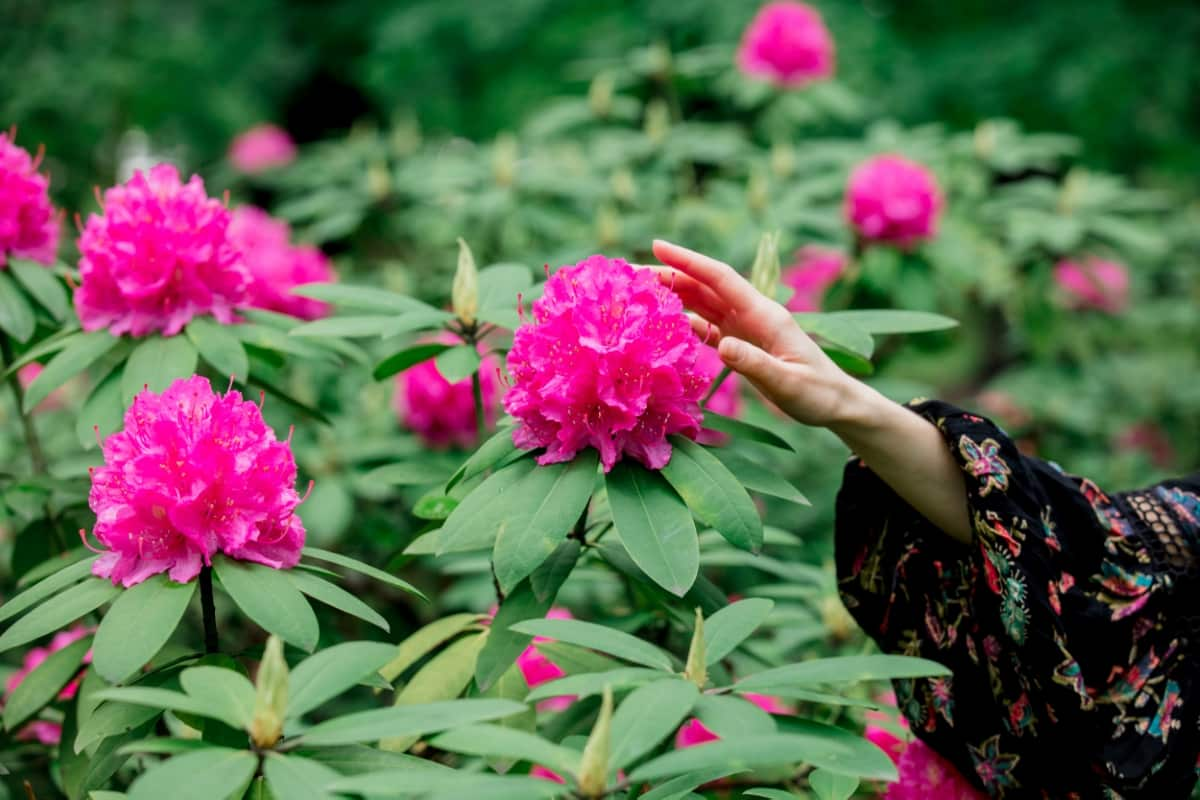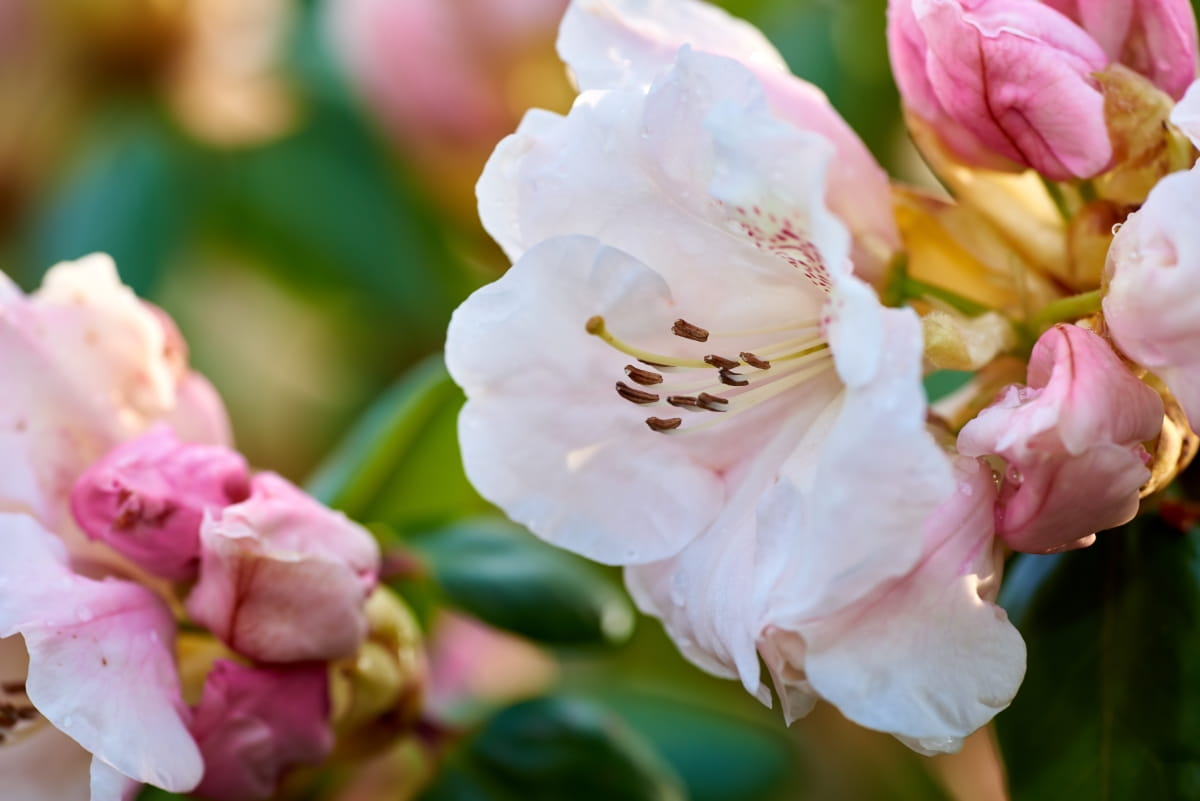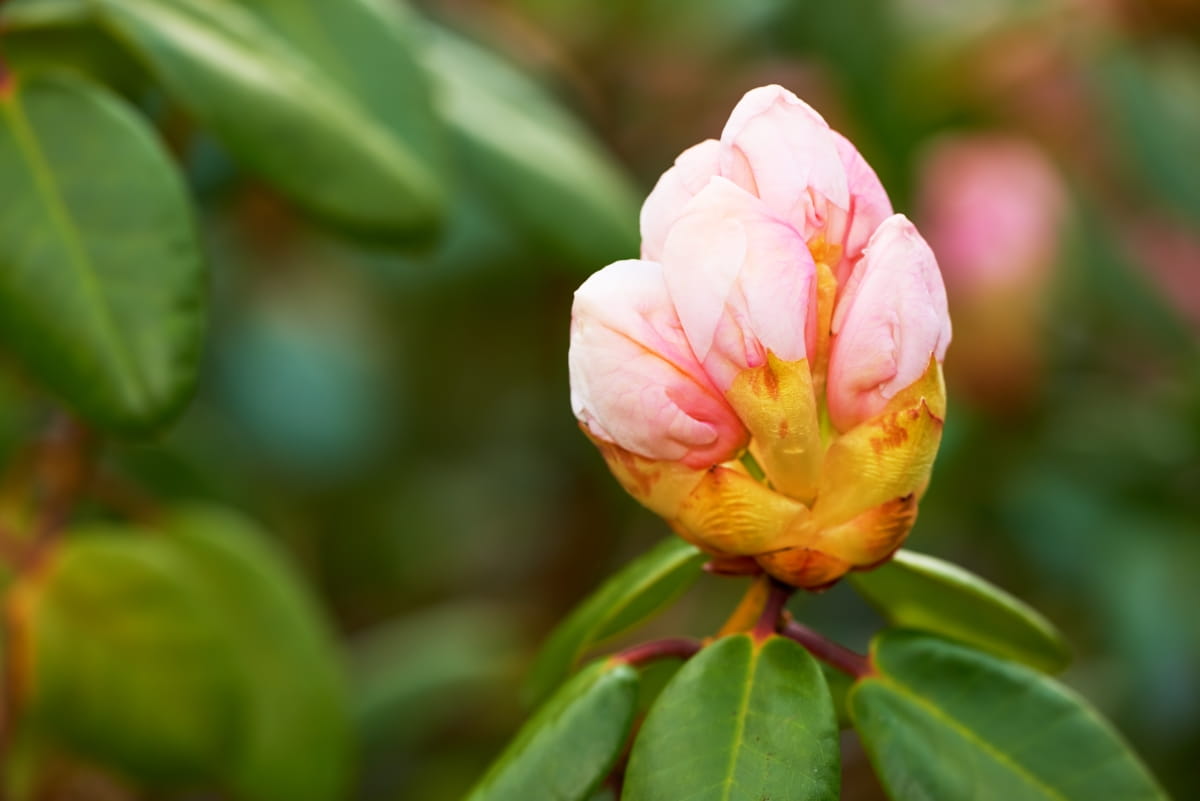This vibrant plant genus, with over 1,000 species, belongs to the heath family (Ericaceae). Rhododendrons are beautiful and vibrant flowering plants that can bring so much joy to any garden. However, like any other plant, they are affected by several problems that can affect their health and growth. Controlling rhododendron problems naturally not only ensures the well-being of your plants but also benefits the environment.

Root Rot
Root rot is a common plant problem that can affect rhododendrons, causing their roots to decay and leading to wilting leaves and stunted growth. This fungal disease thrives in moist soil conditions, making proper drainage essential for preventing its spread. To control root rot naturally, it’s crucial to ensure that the plant is not overwatered.
Allow the soil to dry out to discourage the fungus from multiplying. Additionally, consider applying organic fungicides or beneficial bacteria that can help suppress the disease-causing organisms. Practicing good hygiene by removing any infected plant material promptly can also aid in controlling root rot.
Winter Burn
During the winter months, Rhododendrons can suffer from a common issue known as Winter Burn. This occurs when the plant loses more water through plant leaves than it can absorb from the frozen soil. The result is dried-out and discolored foliage that may eventually lead to damage or death if not addressed promptly.
To prevent Winter Burn, consider protecting your Rhododendrons during harsh winter conditions. One way to do this is to surround the plants with a layer of mulch to help retain moisture and regulate temperature fluctuations. Regularly watering your Rhododendrons in late fall before the ground freezes can also help them stay hydrated throughout the winter months.
Petal Blight
Petal blight is a common issue that can affect the beauty of your rhododendrons. It is caused by a fungus that thrives in wet and humid conditions, typically appearing as brown spots on the petals. To control petal blight naturally, it’s essential to maintain good air circulation around your plants.
In case you missed it: How to Grow and Care for Rhododendrons: A Beginners Guide

Avoid watering them from above and instead opt for drip irrigation at the soil level. Mulching can also help prevent water from splashing onto the flowers, reducing the risk of fungal growth. Consider planting resistant varieties or applying organic fungicides as preventative measures against petal blight.
Insect Damage
Insect damage is a common problem faced by gardeners, but fear not; there are natural ways to combat these tiny invaders. The most effective method is introducing beneficial insects like ladybugs or lacewings that feed on harmful pests. They act as natural predators and help maintain a balance in your garden ecosystem.
Another approach is using homemade insecticidal soap or neem oil spray to deter and eliminate unwanted bugs without harming the environment or beneficial insects. These organic solutions are safe for your plants and pets too. Regularly inspecting your rhododendrons for early signs of insect infestations can also prevent major damage.
Powdery Mildew
Powdery mildew is a common issue that can affect rhododendrons, causing a white powdery substance to appear on the leaves. This disease mostly thrives in humid conditions and can weaken the plant if left untreated. To control powdery mildew naturally, try spraying a solution of water and baking soda onto the affected leaves. This simple remedy can help control the spread of the fungus without harsh chemicals.
Another organic method is to improve air circulation around your rhododendron by pruning any overcrowded branches. Good airflow can prevent moisture buildup, making it harder for powdery mildew to take hold. Remember to remove and dispose of any infected leaves or debris to prevent further spread of the fungus.
Dieback
Dieback is a common issue that can affect Rhododendrons, causing the tips of branches to die off and turn brown. Environmental stressors like extreme temperatures or insufficient water drainage often cause it. When left untreated, dieback can spread throughout the plant, affecting its overall health and appearance. To naturally control dieback in Rhododendrons, start by pruning affected branches back to healthy tissue.
In case you missed it: Homemade Insecticide for Roses: Homemade Remedies for Natural Pest Control on Rose Plants

Make sure to sterilize pruning tools between cuts to prevent any potential diseases further. Improving soil drainage can also help prevent waterlogged conditions that contribute to dieback. Additionally, proper care, such as consistently watering, mulching around the base of the plant, and avoiding over-fertilization, can help strengthen the Rhododendron against dieback issues.
Weather Damage
Weather can have a major impact on the health of your rhododendrons. Extreme temperatures, strong winds, heavy rain, or prolonged drought can all cause damage to these delicate plants. During hot summer months, make sure to provide sufficient water to prevent dehydration and heat stress.
In cold winter months, protect your rhododendrons from freezing temperatures by covering them with burlap or other protective materials. Avoid pruning during this time, as it can leave them vulnerable to frost damage. Strong winds can break branches and strip leaves off your plants. Consider planting windbreaks or placing stakes for support during windy periods.
Buds Dropping or Not Forming
Buds dropping or not forming on your rhododendrons could be a sign of stress from environmental factors like extreme temperature levels or inadequate sunlight. To combat this problem naturally, ensure your plants are getting enough water and are planted in well-draining soil. Additionally, providing a mulch layer around the plant base can help retain moisture, promoting healthy bud development.
Soil Deficiency/Chlorosis
Soil deficiency and chlorosis are common issues that can affect the health of rhododendrons. When the soil lacks nutrients, such as iron or magnesium, it can lead to yellowing leaves and poor growth. Chlorosis occurs when plants are unable to produce enough chlorophyll, resulting in pale green or yellow foliage.
In case you missed it: Unlock Blooms: 9 Reasons Why Your Potted Chrysanthemum is Not Blooming

To address soil deficiency and chlorosis naturally, consider incorporating organic matter. This will help improve nutrient levels and enhance overall soil quality for your rhododendrons. Additionally, using natural fertilizers rich in iron and other micronutrients can help combat these deficiencies effectively.
Nitrogen Deficiency
Nitrogen deficiency in Rhododendrons can manifest as yellowing leaves, stunted growth, and poor flowering. This essential nutrient is crucial for the plant’s overall health and vitality. To address nitrogen deficiency naturally, consider incorporating organic fertilizers rich in nitrogen into the soil. Compost, manure, or fish emulsion are great options to boost nitrogen levels sustainably. Additionally, planting nitrogen-fixing cover crops like clover can help enrich the soil over time.
Known for their stunning blooms and lush foliage, Rhododendrons are a favorite among gardeners worldwide. By applying the strategies, you can effectively address common issues such as pests, diseases, and nutrient deficiencies while promoting the overall health and vitality of your Rhododendron plants.
- How to Grow Hibiscus from Flower
- Plantation Ideas for Home Decoration: A Beginners Guide
- Flower Garden Designs and Layouts for Beginners
- Planting and Spacing Techniques in Papaya: A Beginner’s Guide
- Growing Gold: Essential Techniques for Planting Pineapples
- How to Make Kalanchoe Plant Bushy: Home Remedies and Solutions
- 11 Reasons Why Your Gardenia is Not Blooming: Home Remedies and Solutions
- Eco Elegance: The Guide to Designing a Drought-Tolerant Landscape
- Gardening on a Slope: Strategies for Hillside Landscaping